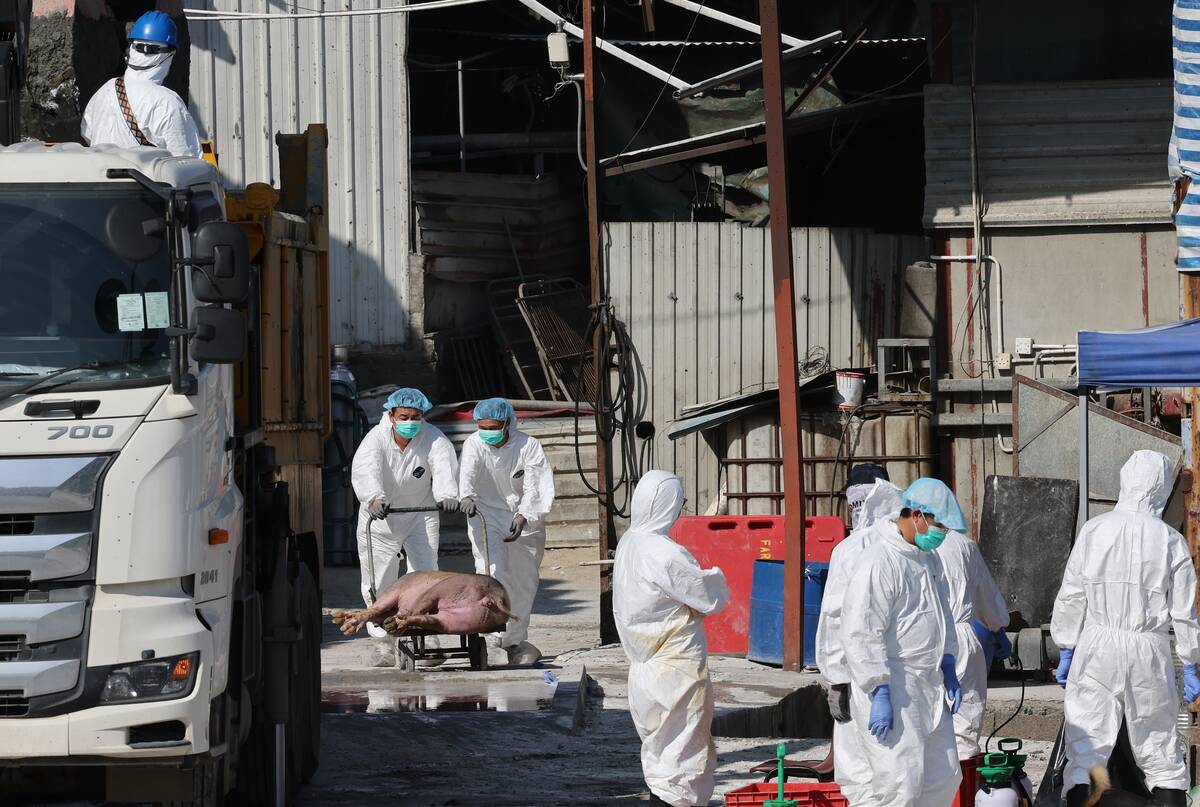Tight margins require producers to wean every calf they can.
While this is a goal every year, when prices for fall calves are expected to continue lower, production efficiency is the only place to find the dollars to replace lost income.
“It all starts here, at calving,” said Sandy Russell of the livestock development branch of Saskatchewan Agriculture.
The livestock economist reminded producers that tighter margins mean they will have to examine all production practices and look for improvement.
Spiritwood, Sask., cattle producer Byrnne Rothwell said his 50 years of experience told him that starting with healthy calves and keeping them that way for the first eight weeks of life is critical to high weaning rates.
Read Also

Mixed results on new African swine fever vaccine
The new African swine fever vaccine still has issues, but also gave researchers insight into how virus strain impacts protection against the deadly pig disease.
“It starts with working to make sure every calf that hits the ground has what it needs: colostrums; a warm place to spend the night and healthy calving ground.”
Rothwell said being able to shift cows and calves onto new soil and bedding regularly reduces disease pressure from scours and other infectious agents.
Murray Feist of Saskatchewan Agriculture said ensuring that cows have good nutrition and a healthy water source are also key to producing calves that can defend themselves against disease.
“A cow is using 25 gallons or more (of water) each day once she has her calf. If that water quality is a problem, then the calf will be disadvantaged as well,” he said.
Environmental farm plans highlight structural issues for wells and surface water sources for some producers. Feist said livestock producers should include in those plans drainage, supply and manure management, and consider the effect of those issues on their choice of calving area and water supplies.
“Get your water tested to ensure that it’s meeting the needs of the cow and that calf,” he said, adding producers should watch for murky water, acidity of 5.5 or lower and nitrates.
Manitoba Agriculture warns producers that water below a pH of 5.5 can put cows off their feed and cause acidosis.
Total dissolved solids become a greater problem for lactating animals when levels rise above 6,500 milligrams per litre.
Nitrates in the water are a serious issue for cows in lactation. Bacteria in the rumen convert the compounds to the more dangerous nitrites and higher volumes of water add to the problem.
High nitrate or nitrite levels can occur in water that has run off heavily fertilized fields or from wells located where ground water easily infiltrates.
Water that contains 100 milligrams per litre of nitrates or 23 mg per litre of nitrate/nitrite-nitrogen form a risk to cattle.
Feist said any strategy that keeps cows’ udders and calves free of soil and manure is important to ensure herd health.
Rothwell agrees.
“Moving them off wet ground. Keeping them out of the mud as much as possible but maintaining shelter for times when weather gets ugly – that is one of the tricks.”
Glen McLeod, a cattle producer at Biggar, Sask., chose to move the start date of calving into March to avoid poor February weather conditions.
“We have lots of shelter with barns and plenty of corrals, but getting out from under those cold nights when the calves tend to be born and you lose one or two anyway, should make a difference,” he said.
Rothwell said producers should also be saving their best hay for spring.
“Cow’s nutritional requirements peak at calving. If you don’t have good feed left, it pays to purchase some or supplement accordingly. It translates into healthier cows and they make healthier calves … and that means more money next fall,” he said.
Feist recommends feed testing if hay quality is suspect or even where producers haven’t done a test in recent years.
“Forage crops are variable and producers should be trying to maximize herd health in the spring. That begins with good nutrition, even if the fall (calf) price makes you want to cut some corners,” he said.














